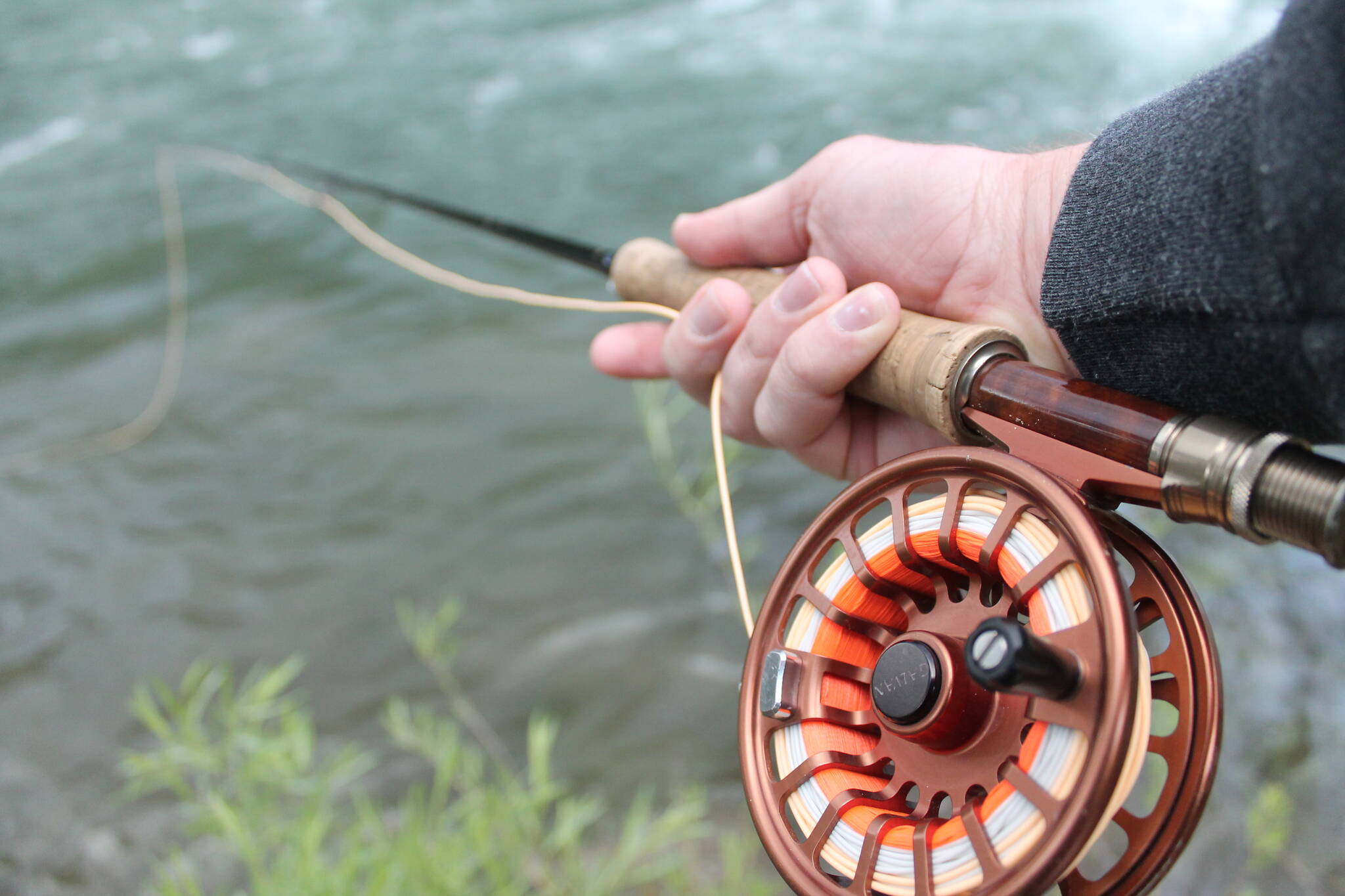By Jeff Lund
I was doing some math, which can be difficult. Not just because I’m an English teacher, but because it can be hard to believe sometimes.
I told someone that the reel on my steelhead rod was a few years old, maybe five or so. Turns out it’s been with me for nine. Nine years. The overwhelming amount of a decade.
This is an indication not only of its durability, but also of the rapid passing of steelhead seasons. I looked at the thing and marveled.
A friend from California had given it to me one summer after visiting on Prince of Wales. His company had provided the raw materials to the company who then made it into a beautiful reel. My buddy doesn’t didn’t fly fish so he had no idea what he was doing in giving me such a gift.
It paired perfectly with a 6-weight fly rod I bought to fish bigger water for big trout around California. When I moved back to Alaska and bought a premium brand steelhead rod, I used that reel since it was meant to handle 6 and 7-weight setups. A 7-weight is a little light for really big steelhead, but a quality, fast-action 7-weight has been perfect for the steelhead I’ve found in Southeast Alaska.
While I do love that fly rod, it’s the reel that gets me thinking in the way that some things do. Not all things, but certain things.
When I looked back through fly fishing photos it was everywhere. On the never-to-be-named steelhead rivers around here, of course. But also on the Upper and Lower Sacramento Rivers in California. The White River in Arkansas. The Madison in Colorado. The North Platte in Wyoming. Goodness, I’ve had the good fortune of fishing some famous rivers in my fly fishing days, and that reel was there for just about all of them. It has proven its worth. That’s why it’s my favorite.
Spending a lot of money on a piece of gear does not mean it will have that long-term value that makes it a favorite. Money really doesn’t play a role at all in the honest ascension to favorite-dom. Some might say their most expensive items are their favorites, but that could be motivated by the desire to justify the expense. Similarly, people might have an inexpensive favorite simply because they like telling people about their inexpensive favorite, ignoring the reality that it’s really not very good.
A true favorite cannot be faked and it really isn’t a choice. Few people pick out a hat and think, “This is the hat, it will be my favorite.” It just becomes part of the routine and gets put on every day. Same thing with a hoodie. I have been indifferent towards hoodies. Some hoodies have ended up at Salvation Army within the year. The one I am wearing right now hardly gets washed, because it’s always being worn. Except at work, of course.
A good piece of clothing or gear is not a piece of you or a friend because that’s weird, but you do feel something is missing when it’s gone. You don’t exactly cry out like Tom Hanks did when his volleyball floated away, but losing a hat, or your favorite fly rod breaking can feel more painful than it should.
You had what you liked. You had what worked. Now it’s over.
That will happen with my reel, but nothing about the way it has worked makes me think it will be anytime soon. It’s been dropped, bumped, submerged, scratched and everything else that happens to a reel over nine years.
In a world in which businesses push consumables (that term used to mean food, now it applies to everything, including computers and cell phones) it’s nice to have something that is dependable. Even if my memory sometimes isn’t.
• Jeff Lund is a freelance writer based in Ketchikan. His book, “A Miserable Paradise: Life in Southeast Alaska,” is available in local bookstores and at Amazon.com. “I Went to the Woods” appears twice per month in the Sports & Outdoors section of the Juneau Empire.

